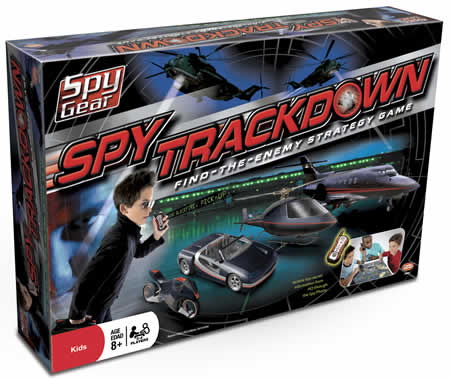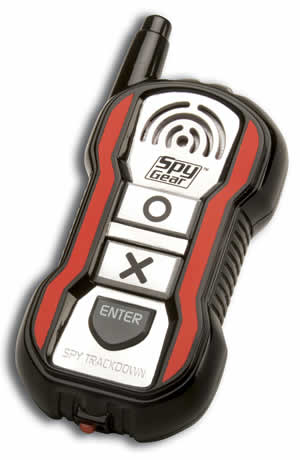
I went up to Seattle on Saturday to get my copy of Spy Trackdown, a new game from Wild Planet‘s Spy Gear series of toys (I have to get the remote-controlled camera/tank to go with my shocking tanks).
I even got a chance to play it with my friend Jon and his son Dane, and I think a fun time was had by all, despite the fact that I won the game rather handily and that we’re all well above the age range at which the game is targeted. I guess that the hours I spent coding for the prototype engine paid off, and the developers even told me that the programmers who wrote the final version for the chip that runs the game’s electronics used my my original Flash code as their template.
In Spy Trackdown you’re one of up to four agents travelling across the world’s continents (except for Antarctica), going from city to city (referred to as “zones” in the game but associated with city names on the board). Each continent has a number of zones, ranging from about ten down to four for Australia. A “covert agent” is placed in a random zone on each continent; the “enemy mastermind” is placed randomly in an unoccupied zone anywhere in the world. All the players begin in the same randomly-chosen location.
The whole game is controlled by the Spy Phone: a device with a speaker, an ‘X’ and an ‘O’ button, and an ‘Enter’ button. There’s a little cradle on the board that the Spy Phone fits into; it has its own function in controlling how loud the speaker is and also triggers modal changes.

During setup, players identify which of the four agent colors are playing (by pressing X or O) and player order is randomly assigned. A player turn consists of two code entry sequences: the player enters a four-character sequence of Xs and Os (it’s binary numbers! for kids!) then either confirms the action with the Enter key or puts in a new code to override. Zones have from one to four travel modes available (motorcycle, sports car, helicopter, jet), all to different destinations, and each mode has its own unique four-digit binary sequence, which means that as the codes are entered, the chip can keep track of where each player is.
Most of the time, the Spy Phone is in its cradle and the instructions and information it reads out can be heard by anyone, but when a player ends their turn, the Spy Phone tells them to pick up the phone and press Enter to hear their secret messages. Most of the time, all the player hears is the shortest number of zones separating them from the covert agent on their current continent. By triangulating (and sheer dumb luck) the player can figure out how to end their turn in the covert agent’s zone. The first player to end their turn on a covert agent zone on that continent is entitled to four Covert Action cards; the next player there gets three, and so on. The catch is that they don’t get the cards immediately, they only get cards when they leave the continent.
The Covert Action cards themselves have other codes on them, giving players the ability to set traps (which lets them steal cards from other players), take extra turns, find out how far away the mastermind is, what direction the mastermind is, and to capture the mastermind. Capturing the mastermind wins the game.
All in all, a pretty nice game of logic and luck, based on a great concept by some folks I’d last worked with ten years ago. I wrote a little ActionScript A* path-finding algorithm that ended up getting replaced by lookup tables in the chip version (because the chip didn’t have the processing power to do the path-finding). The prototype had voice fragments that I could string together and generate sentences which the final version does as well. I’m proud of the way the whole project went.